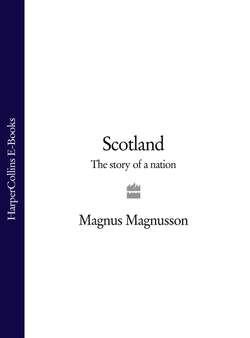Читать книгу Scotland: The Story of a Nation - Magnus Magnusson - Страница 27
The vikings
ОглавлениеThe vikings have long been considered the bogeymen of history. For centuries they were cast in the role of Anti-Christ – merciless barbarians from Scandinavia who plundered and burned their way across the known world, heedless of their own lives or the lives of others, intent only on destruction and rape and pillage. In fact it was never quite as one-sided as that – history seldom is – but it made a good story at the time. Today there is emerging a much more balanced version of the story which depicts the vikings in a less lurid and more objective light. It is mainly a matter of emphasis: less on the raiding, more on the trading; less on the piracy and pillage, more on the poetry and artistry; less on the terror, more on the technology of the Norsemen and the positive effect they had.
Politically as well as militarily they had a profound effect on the shifting, unstable kingdoms which were developing in what was to become Scotland. The historical record of their incursions into Scottish waters and territory began in 795 with a raid on Iona (the first of three such raids in ten years), and Scotland was then engulfed in the turmoil of what has come to be called the Viking Age (800–1050). While Danish raiders attacked the Continent and southern England, Norwegian invaders established a Norse earldom in Shetland and Orkney which was to last for more than three hundred years, from the middle of the ninth century to the thirteenth.
The Orkney earldom was a semi-autonomous fiefdom of the Norwegian crown, theoretically a Norwegian possession but frequently a recalcitrant one which displayed a large degree of independence. The main source for our knowledge of the Northern Isles during this period is an Icelandic saga, Orkneyinga Saga (‘The Saga of the Earls of Orkney’), written early in the thirteenth century. It is a sprawling, dynastic chronicle of the lives of the earls of Orkney, a vivid narrative pageant of clashing personalities and dramatic events – not so much a history as a historical novel. It is the only medieval chronicle which has Orkney as the central place of action, but the story has much to say about the Norse impact on the northernmost counties of mainland Scotland, Caithness and Sutherland (which to the Orcadian Norsemen was ‘South-land’!).
Today the people of Shetland celebrate their Norse heritage on the last Tuesday of every January with an exhilarating, night-long viking fire-festival called Up-Helly-Aa, which culminates in the ceremonial burning of a viking galley in Lerwick, the capital town of Shetland. It is not an ancient ritual by any means. It was invented by a blind Shetland poet in the 1880s, an aspect of the Victorian ‘rediscovery’ of the Viking Age by literary figures like Thomas Carlyle and William Morris – and, before them, Sir Walter Scott with his novel The Pirate (1821), which was inspired by a fleeting visit to Shetland in 1814 and a glimpse of the ruined medieval baronial building at Sumburgh which he named, romantically, Jarlshof (‘Earl’s Temple’).
From their base in the Northern Isles the Norsemen ruled a miniature empire of the North Sea. It was probably from Orkney that their early raids on Iona were mounted; it was from Orkney that they exercised dominion over the Western Isles, which from then on owed fealty to the Norwegian crown. Viking armies penetrated deep into mainland Scotland in the north and the west, inflicting heavy defeats on the Scoti and the Picts alike. On the west coast, in 870, the vikings stormed the Strathclyde fortress of Dumbarton after a four-month siege; on the east coast in 890 they captured the formidable Pictish fortress of Dunnottar on its apparently impregnable rock projecting from the coast three kilometres south of Stonehaven. Norse power played a potent part in the kaleidoscope of aggression and alliance from which the picture of Scotland was to emerge.
